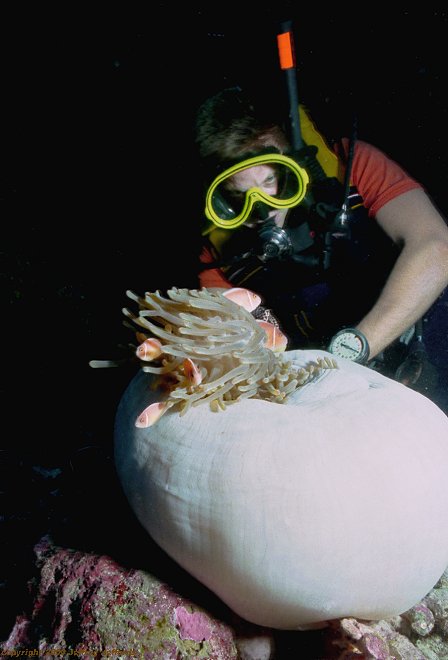 |
| My great friend and dive buddy Erick Snellman is shown
here encountering a sea anemone with a few of its
resident clownfish. Erick was always a cooperative "model" for my photos, and
very knowledgeable too-- he spent three years teaching biology to cadets at the Air Force
Academy. This was a night dive, when it's not uncommon for anemones to ball up into an apple (contracted) shape with the tentacles protected. Sea anemones that harbor clownfishes like these are also host to tiny unicellular algae within their tentacles. As a byproduct of photosynthesis, these algae produce sugars which provide an energy source to help keep the anemone alive. Since the anemone's tentacles must be exposed to sunlight for photosynthesis to occur, it's easy to see why the anemone has less to gain from having its tentacles exposed at night. The relationship between these clownfish and their host anemone is an example of symbiosis. There are almost 1000 species of sea anemones in the ocean, but only 10 are host to anemonefishes. There are 28 different species of anemonefishes worldwide, seven of which I was fortunate enough to have encountered (and photographed) in the Philippines. For a close-up view of a Pink Anemonefish, click here Anemone Identification: Heteractis magnifica (formerly classified as Radianthus ritteri) Anemone common name: Magnificent Sea Anemone Clownfish Identification: Amphiprion perideraion Clownfish common name: Pink Anemonefish back to the Gallery II |
